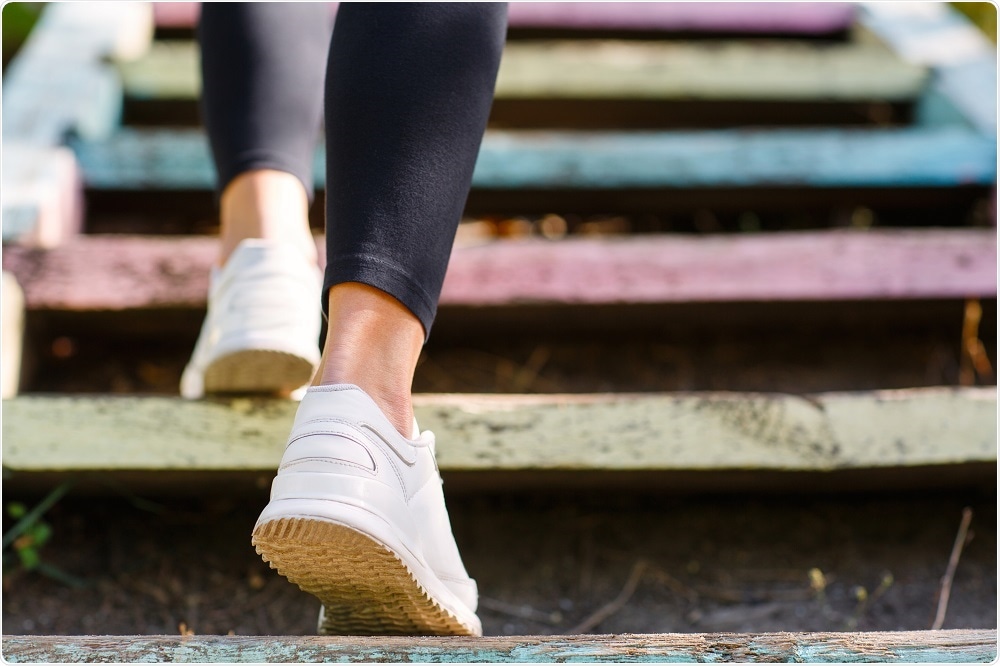Feb 14 2018
New research published in the journal Menopause found that climbing stairs helps lower blood pressure and strengthens leg muscles in postmenopausal women.
 Credit: Alfa Photostudio/Shutterstock.com
Credit: Alfa Photostudio/Shutterstock.com
The study findings were particularly relevant for postmenopausal women with estrogen deficiencies who are vulnerable to vascular and muscle problems.
Though it is well known that exercise is good for an individual’s health; for postmenopausal women, identifying the correct types of exercises to attain the desired benefits without additional side effects is complicated.
For example, high-intensity resistance training is an effective intervention to avoid age-related loss of muscle strength in postmenopausal women, however, its side effects include elevated blood pressure among the middle-aged adults with prehypertension or hypertension.
These negative effects are reduced by combining resistance training and aerobics; however, barriers such as money, lack of time, poor weather, nearby fitness facilities, and a sense of embarrassment prevent many women from achieving the benefits.
Compared to high-intensity resistance training, climbing stairs offers the advantages of resistance and aerobic training for enhancing cardiorespiratory fitness and leg muscle strength in postmenopausal women, without additional costs or having to leave the home.
It also offers health benefits such as enhanced lipid profiles, lowered risk of osteoporosis, and fat loss.
The study involved Korean postmenopausal women, who trained for four days a week, climbing 192 steps two to five times a day.
The findings showed that stair climbing was strongly linked to the reductions in blood pressure and arterial stiffness and improved leg strength among the stage 2 hypertensive postmenopausal women.
This study demonstrates how simple lifestyle interventions such as stair climbing can be effective in preventing or reducing the negative effects of menopause and age on the vascular system and leg muscles of postmenopausal women with hypertension."
Dr. JoAnn Pinkerton, Executive Director of NAMS
Source:
https://www.eurekalert.org/pub_releases/2018-02/tnam-cst021318.php